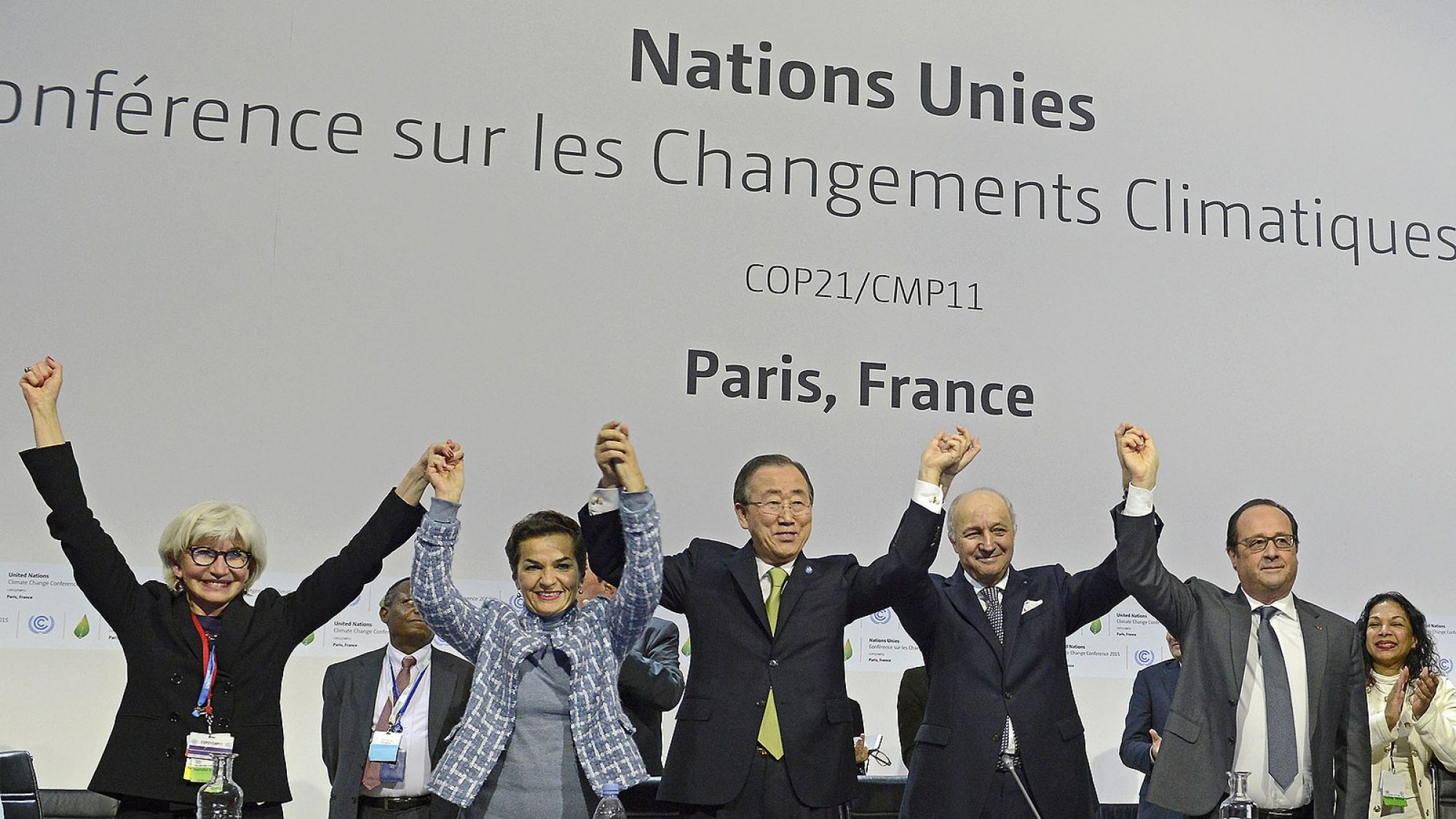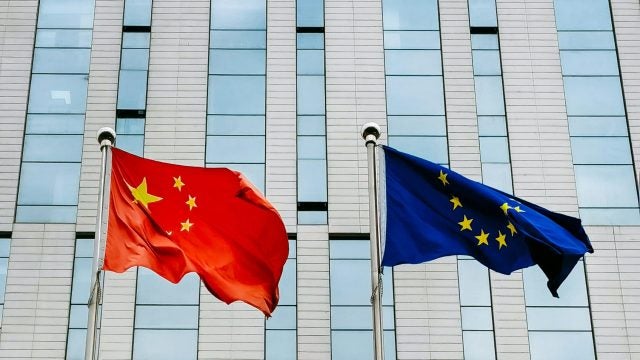
Title: Intersecting Interests and Coincidental Compatibility: How China, the EU, and the United States Can Coordinate Their Push for Globalizing Green Finance
To curb global warming, policies to green financial systems are proliferating across the globe. Based on their different political and economic systems, China, the European Union, and the United States have unintentionally become the policy-pioneer, standard-setter, and mainstreamer of the green finance agenda. As a next step, understanding and acknowledging these roles are critical for the policy coordination required to maximize impact.
As a key component of meeting the Paris Agreement, green finance has been a vital issue in climate change mitigation after China initiated a G20 working group in 2016. Since then, green finance efforts have snowballed through government policies, industry-led principles, as well as NGO standards. Prominent examples of each type include the EU’s carbon market, the Climate Action 100 investor alliance, and the Climate Bonds Initiative. Within these efforts, China, the European Union, and the United States have been the three core pillars carrying forward green finance globally. For example, within the rapidly expanding green bond market, the three parties are the biggest issuers, cumulatively making up more than three-quarters of the global market.
While each party has made significant contributions, they have done so in very different ways: China has been a policy-pioneer through its state-capitalist system, the EU a standard-setter through its coordinated market economy, and the United States has been the mainstreamer through its liberal market economy. Today, coordinating policies around these roles can give green finance its next push.
State-Driven, Coordinated, and Liberal Economic Systems
Since the G20 working group was set up five years ago, it is possible to observe how the different economic systems in China, the EU, and the United States have shaped their efforts to green financial systems. Surprisingly, despite the uncoordinated nature of their actions, their distinct systems and roles have benefitted the scaling up of green finance through a three-step process.
The first step happened when China pioneered green finance policies, moving such policies into the realm of what is possible and acceptable. We have seen this in China’s early policies on mandatory green taxonomies, green bond standards, environmental information disclosure, and the inclusion of green factors in central banking. In Western countries, neither of these policies were feasible before, since central banks and financial system regulators are largely independent of national governments and mandated to work only on financial stability, employment, and inflation. However, as there is no independence of central banks and regulators in China, the country used a top-down, command-and-control approach to drive green finance. To illustrate, within a year of the Chinese government launching green bond standards, the country has the largest green bond market in the world. This is possible through China’s state-capitalist economic system.
The second step took place when the EU picked up the green finance policies that China pioneered and began developing standards within them. At this stage, the effectiveness of China’s policies convinced the EU to get on board. Currently underway in the EU is the sustainable finance taxonomy, green bond standards, mandatory sustainability disclosure for asset managers, and climate stress testing in the European Central Bank. Since the EU has developed these practices through a bottom-up, consultative approach, with insights and opinions from market participants, they are likely to become global standards. These policies could be carried out based on the EU’s coordinated economic system where governments, financial institutions, researchers, and many other stakeholders jointly design policies. Such standardization could not be driven by China, given the relative isolation of the Chinese financial market and the difficulty of global markets accepting the Chinese government’s sustainability standards.
For the third step, the United States is playing a key role in mainstreaming green finance, as the world’s most influential financial institutions are based there. We have recently seen Fannie Mae issuing the worlds’ largest green bond, BlackRock endorsing the importance of Environmental, Social, and Governance (ESG) investing, and American investors calling for the U.S. Securities and Exchange Commission (SEC) to improve environmental information disclosure. With their sheer size, global operations, and authority as trend-setters, American financial institutions’ actions mainstream green finance across the globe. This process has been based on the United States’s hands-off approach to financial system governance rooted in the American liberal market economy.
From this three-step process, green finance is both expanding and converging. We are seeing intersecting interests toward greening financial systems leading to uncoordinated policy responses that are only coincidentally compatible. While convergence takes place at the policy level, it does not happen at the level of the underlying economic models. This means that each party can maintain and expand on its unique roles, as greater coordination today would lead to greater impact.
The Glasgow Opportunity
While all initiatives by China, the EU, and the United States work toward aligning financial systems with the Paris Agreement, the world remains far from reaching that goal. The annual financing gap to achieve the Sustainable Development Goals remains at $2.5 trillion and global greenhouse gas emissions have stagnated at above 30 gigatonnes over the last decade. This shows the urgency of moving forward with green finance policies.
In December this year, all the world’s countries will meet in Glasgow for COP26 to negotiate climate policies. For this event, green finance is high on the agenda. Therefore, the COP26 presents a timely opportunity for the three parties to begin coordinating their approaches to green finance to maximize their collective impact. Among the key policy areas where short-term coordination is needed is environmental disclosure, which is an ongoing working area for all three parties. The core initiative in this area is the Task Force for Climate-Related Financial Disclosures (TCFD), which is a framework for business and financial institutions to disclose their climate strategies and performance. As an intergovernmental initiative, it is a suitable basis that governments can base their policies on, without any single country exerting control over other countries’ policies. Mainstreaming TCFD is an important task to avoid greenwashing and provide better information for investors on how green companies really are.
To roll out such disclosure globally, each of the three parties can take concrete policy actions. In the past, climate disclosure was pioneered by China, shaped by the EU, and taken into the mainstream of green finance debates by U.S. financial institutions. As disclosure is already at the mainstreaming part of the three-step process, the most needed policy is simply to use the TCFD as a shared basis for it to become global practice. At this stage, the task at hand is to coordinate. First, China should endorse the TCFD as the basis for its mandatory disclosure regulation being rolled out this year. As with the rapid scale-up of green bonds in China, that would lead to thousands of companies disclosing by the standard within a year. Second, the EU should directly reference the TCFD in the sustainability disclosure requirement, which will be in place by early 2022. Similar to the EU’s digital privacy regulations, the EU’s disclosure policy covers all activities across the world, forcing companies beyond the EU to adopt the TCFD. Finally, the U.S. SEC should encourage disclosure by TCFD, meeting the recent request of the financial industry. As the SEC is currently in dialogue with the financial industry, it may go beyond encouraging to requiring companies to disclose by the TCFD.
Bringing these policies into the meeting in Glasgow is a concrete example of how coordination is needed to take green finance the last mile to global mainstreaming. Doing the same for green taxonomies, green bonds, central banking, and other areas of green finance requires understanding and acknowledging the roles that China, the EU, and the United States can each have. Using and coordinating these roles chronologically or simultaneously depending on the situation can maximize the effect of the unique roles without changing the distinct underlying economic systems. With outset in the suggested short-term efforts in Glasgow, coordinating these roles has the potential to be a game-changer in speeding up green finance for the long term across the world.
. . .
Mathias Lund Larsen is a double Ph.D. Fellow at Copenhagen Business School and the Chinese Academy of Sciences and a Senior Research Consultant at the International Institute of Green Finance of the Central University of Finance and Economics, Beijing, China. He has previously held positions at the UN in New York, Nairobi, Bangkok, and Beijing. His research focuses on green finance in China and its implications for global governance.
Image Credit: Flickr, UNclimatechange, Creative Commons License
Recommended Articles

This article contends that South Africa’s 2025 G20 presidency presents a critical opening to shape governance of critical mineral supply chains, essential for renewable energy, digital economies, and national…

Germany’s economy is being throttled by a more competitive China that has usurped its previous manufacturing dominance in many industries. In response, Germany has doubled down on the China bet…

In 2021, the European Union (EU) attempted to assert itself in the Indo-Pacific arena to increase its geopolitical relevance by releasing an ambitious and multifaceted Indo-Pacific Strategy. However, findings from…